What is Lintel?
Doors and windows are not only necessary parts of a building’s structure, but they also serve as vulnerable spots in the exterior shell. Creating an entrance in a building necessitates sound engineering since it is necessary to preserve structural and thermal stability—a lintel used in this situation.
A lintel is a beam that spans entrances in buildings such as doors, windows, and other openings to sustain the load from the structure above. The lintel beam’s width equals the wall’s width, and its end is built into the wall—lintels classified according to the material used in their construction.
Lintels are typically rectangular, support a wall over a door or window, and anchor the door and window frames wherever utilized. Lintels built of wood, stone, brick, reinforced brickwork, reinforced concrete, or rolling steel pieces embedded in cement concrete. Lintels are typically employed for load-bearing purposes, although they can also use as decorative elements.
The function of lintel:
- The lintel is a beam put over openings like windows, doors, and other openings to sustain the load from the structure above the building.
- The lintel is responsible for the structure’s stability. The lintel also serves another crucial purpose.
- The lintel beam distributes the applied weight from the superstructure to the side walls.
- A lintel’s function occasionally serves as a decorative element for the construction.
- The lintel’s purpose is to protect the doors and windows from the elements.
Types of Lintel:
Lintels are classified into the following types based on the materials used in their construction:
1. Timber Lintels
2. Stone Lintels
3. Brick Lintels
4. Steel Lintels
5. Reinforced Concrete Lintels
6. Reinforced Brick Lintels
1. Timber Lintels:
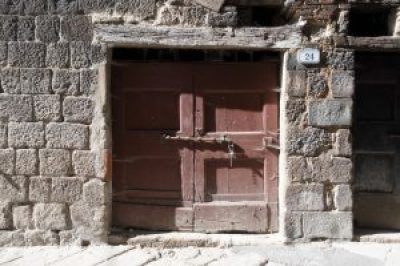
Fig 1: Timber Lintel
Courtesy: civilgyan.com
Timber lintel is the most common. They’re still used in hilly locations where timber planks are plentiful. They are, however, phased out in favor of a range of newer forms. They are unable to withstand high loads, particularly bending strains. The designer chooses to sandwich the beam board in mild steel plates with huge windows or apertures from top to bottom. They become more durable and long-lasting as a result of this.
The steel bolts hold the timber lintel beam in place, which is more expensive, less durable, and prone to fire. The most serious drawback of a timber lintel is its vulnerability to fire. It is brittle and less durable. It necessitates adequate ventilation. Otherwise, the rot will destroy the beam.
2. Stone Lintels:
Stone lintel beams are used in locations where the stone is readily available, and thicknesses are essential in their design. They are also used to cover holes in brick walls. The stone lintel’s thickness is an important consideration in its design. The stone lintel is the shapes of a single piece with a thickness of 4cm every 30cm length of the span. And a minimum thickness of 8cm as a thumb rule.
They’re commonly applied in mountainous constructions since they’re too heavy, and alternative materials for their construction aren’t readily available. Some disadvantages stone lintels are:
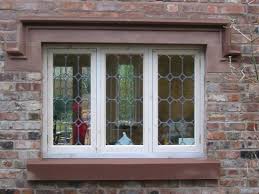
Fig 2: Stone Lintel
Courtesy: jbstone.co.uk
- Because of their low tensile strength, they are not used in buildings subjected to vibratory loads.
- Its delivery is difficult to install in cities because of its complexity.
- A stone lintel cannot tolerate excessive transverse tension.
3. Brick Lintels:
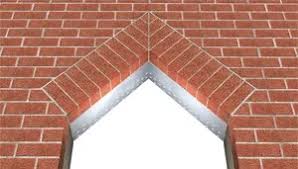
Fig 3: Brick Lintel
Courtesy: civilengineersforum.com
Lintels are made of first-class brick that is durable and well-burned. Bricks on end, bricks on edge, and coursed bricks set horizontally over openings are all options. This type of lintel is used when the entrance is tiny (less than 1m) and the light load. Their depth ranges from 10 cm (one brick thickness) to 20 cm, depending on the span. Standard blocks have less shear resistance at end joints than bricks with frogs filled with mortar.
4. Steel Lintels:
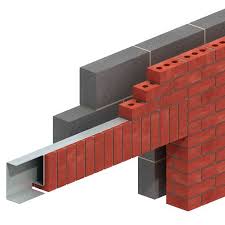
Fig 4: Steel Lintel
Courtesy: archiexpo.com
These lintels, made primarily of rolling steel joists embedded in concrete, are utilized over big openings, especially when they must sustain a substantial load of solid walls in places like storefronts and bay windows. These are also known as bressummers. Lintels made of steel angles or concrete channel sections are sometimes used for narrow spans and light loads, especially when there isn’t enough room above to support an arch or create a relieving arch. They are so expensive, only used in exceptional circumstances.
These are normally three rolled steel joists or channel sections joined together by tube separators or cross-bolts at the right spacing. To protect the built-up steel parts from corrosion and fire. For bond or grip between the steel section and the concrete, a strip of metal lathing or wire netting is placed at the bottom of the steel section before it is concreted.
5. Reinforced Concrete Lintels:
The reinforced concrete lintel is used to span window and door openings because of its rigidity, strength, economy, fire resistance, and ease of building used in structures. The lintel is reinforced cement concrete and can support any span or load.
The depth is determined by the load’s size and the length of the span. In comparison, the width is equal to the wall’s width.
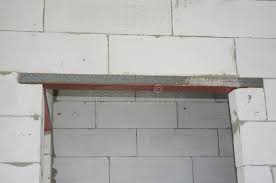
Fig 5: Reinforced Concrete Lintels
Courtesy: dreamstime.com
Half of these bars are cranked at the ends of the reinforced cement concrete lintel, and the primary reinforcement provides at the bottom. Shear stirrups are used to withstand transverse shear in the structure.
6. Reinforced Brick Lintels:
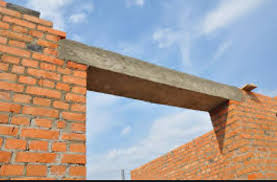
Fig 6: Reinforced Brick Lintels
Courtesy: howtomakehome.com
Heavy loads and larger span lengths are challenges with brick lintels. Reinforcing bars can help with these issues. As a result, reinforced brick lintels offer more support than plain brick lintels. The reinforced brick lintels have a depth of 10 cm or a multiple of 10 cm (or one brick thickness).
The bricks are positioned to have enough lengthwise space between adjacent bricks to install mild steel reinforcement bars. Once the insertion bars are fitted, the remaining gap is filled with 1:3 cement mortars—6 mm bars employed as vertical stirrups at every third vertical joint. Primary reinforcement provides by 8 to 10 mm bars positioned at the bottom.
Advantages of Lintel:
- They are simple to construct and look to be simpler.
- If the load is evenly placed, they may sustain a significant weight.
- Because no excessive load is given to the lintels’ ending supports, they are not necessary to build solidly.
- Frameworks are affordable, and lintel centering is simple.
- They have a basic and delicate appearance.
Disadvantages of Lintel:
- Since the bottom is under tension and the topside is under compression.
- The maximum weight of lintel that can support.
- The weight of each piece.
Conclusion:
These are the different varieties of lintels and their characteristics. All lintels have distinct features, and the type of lintel is chosen by the type of building, its design, and the region in which it is taking place.
References:
1. What Is Lintel? | Function Of Lintel | Types Of Lintel – Civilscoops.com. (2021, July 23). civilscoops.com. https://civilscoops.com/types-of-lintel/.
2. Lintel Definition And 7 Types Of Lintel, Function, Construction. (2019, December 31). Civil Knowledge. https://www.civilknowledges.com/lintel/.
3. What Is Lintel? 7 Different Types Of Lintel Used In Building – Civil Engineering. (2021, February 26). Civil Engineering. https://civilnoteppt.com/what-is-lintel-7-different-types-of-lintel-used-in-building/.
4. V. (2020, April 7). Lintel Definition & Types Of Lintels – Civil Engineering Notes. Civil Engineering Notes. https://civilengineeringnotes.com/lintel-types/.
5. What Is Lintel? Uses And Types Of Lintel In Construction.. (2018, September 9). Civil Seek. https://civilseek.com/lintel/.
6. Rajput, K. (2021, October 19). What Is Lintel Beam | Lintel Beam Size | 7 Types of Lintel Beam. Civil Jungle. https://civiljungle.com/what-is-lintel-type-of-lintel/.
If you have a query, you can ask a question here.


